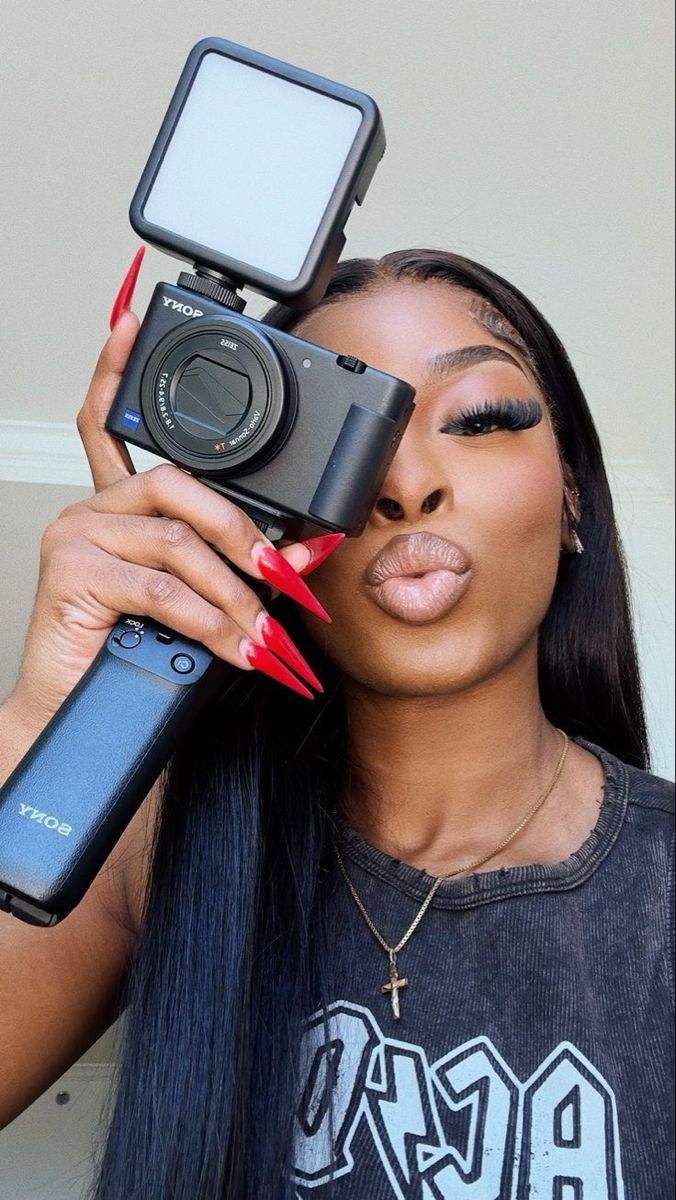So, everyone and their cat is suddenly a “content creator.” Your neighbour is doing TikToks, your cousin is filming GRWMs, and your coworker who can’t even use Excel is now a “digital storyteller.” And honestly, you’re wondering if this might be your own side hustle ticket out of broke-ville.
And now you’re scrolling through TikTok, wondering if you should become a UGC creator or an influencer. You want the side money, you want the creative outlet, and honestly, your rent isn’t paying itself. So here’s a dive into understanding UGC vs influencing to help you make the right choice.
What is User-generated content (UGC)?
User-generated content is any form of content, such as photos, videos, and reviews, created and shared by customers, creators, and fans of the brand. This is authentic social proof for the business that people trust their brands, which is why they pay content creators for original video content.
How does this affect you? Brands pay you to create videos, or content about their product, without even needing up to 10,000 followers. Think of it as “influencing without the influencer stress.” You’re like the content supplier. The brand handles posting; you handle creating. For instance, you film yourself unboxing a skincare product in your bathroom. The brand runs it as a paid ad.
Signs UGC Might Be For You
You Already Talk to Yourself in the Mirror: If you rehearse imaginary unboxing videos every time you open a parcel, congratulations. You’ve basically been doing unpaid UGC since forever.
You Have Opinions (Strong Ones): You can talk for ten minutes straight about why one lip gloss is better than another.
You Don’t Have Patience for Algorithm Drama: Unlike traditional influencing, you don’t need to pray to the TikTok gods every time you post. UGC gets used on brand ads, not your feed. This means that with as few as 1,000-2,000 followers, you can start working with top brands across the globe. Several UGC creators have stories of getting brand deals even with 200 followers.
Pros and Cons of UGC Influencing
With UGC, you don’t need thousands of followers; brands are actively searching for ‘real people’. This means you get paid for the videos you make, and the company runs ads or posts your video on their socials.
It is important to note that it is still work, which means you have to work on your scripting, filming, and editing skills. At the same time, some brands still want the cliche, ‘aesthetic girls’, and hence, you might face rejection occasionally. At the same time, while building your portfolio, you will need to pitch to companies continuously, which means sending cold emails or DMs to brands you’d like to work with.
The money bit: Beginners often start charging $100–$300 per video, sometimes more if you can edit well. As you gain experience and a portfolio, you can push into $500+ per piece. Many creators find that UGC pays faster than waiting for a social media following to grow.
Where do you even start? You don’t need an agent or manager. Most people find gigs through freelance platforms, UGC job boards, or by pitching directly to brands.
How to start:
- Make 3–5 practice videos with products you already own.
- Build a mini portfolio (a Google Drive link or Instagram highlight works).
- Pitch directly to brands (DM their social media team or email the marketing contact) or join UGC marketplaces like Billo, Fiverr, or Upwork, where brands are actively looking.
What to remember: UGC is less about fame, more about craft. The better you get at making content brands can repurpose in ads, the more they’ll keep coming back.
Also, you’re not getting PR boxes here. You buy the product (or the brand sends it), film, and get paid. It’s a service business, not a “freebies for life” club.
What is influencing, and is it right for you?
Influencing is the most popular and traditional means of earning as a digital content creator. You build an audience on Instagram, TikTok, YouTube, or any social media channel, and brands pay you to promote products to that audience. Your value isn’t just in the content, it’s in the number of eyes you can reach. In this situation, people don’t just want the products; They want it because you said it was life-changing.
How to know if influencing is for you:
- You secretly love being the centre of attention.
- You have a personality that makes strangers feel like they know you.
- You enjoy sharing your daily life, from your skincare routine to your Sunday routine.
- You can handle brand negotiations, affiliate links, and the occasional troll comment.
The money bit: Brands often start noticing influencers around the 1,000–5,000 follower mark if your engagement is strong. Don’t be fooled into thinking you need 100K. Micro-influencers (under 50K) are often more valuable because their audiences trust them. Rates vary wildly, but a beginner might earn $50–$200 per sponsored post, scaling into thousands as your following grows.
Where do you start? Grow your presence on one platform. Post consistently, interact with your community, and create a clear niche. Brands look for influencers who have both an audience and a personality that makes people listen.
What to remember: Influencing takes time. It’s less about immediate cash, more about slow and steady growth. Brands don’t just want numbers; they want conversion.
Yes, this is where you start seeing them. But here’s the catch: free mascara doesn’t pay rent. PR is a perk, not a paycheck. The real money is in brand deals, not free gifts.
How to start:
- Pick one platform and stick to it.
- Post consistently around a niche (beauty, lifestyle, fitness, books, whatever feels natural).
- Engage with your audience so you’re not just broadcasting into the void.
- Pitch brands once you have consistent engagement. Many smaller brands happily work with creators under 5K followers if the vibe matches.
UGC vs Influencing: How Do You Choose?
It depends on your personality and your patience. If you like making content but don’t care about building a following, UGC is a faster way to start earning. If you want the spotlight, the audience, and the long-term brand power, influencing is your lane.
Ask yourself:
- Do I want to create without worrying about likes? That’s UGC.
- Do I want to grow an audience and cash in on attention? That’s influencing.
- Do I like money and chaos? That’s both.
- Hate being on camera? UGC.
- Love being the main character? Influencer.
- Want quick money with no followers? UGC.
- Willing to play the long game for bigger brand deals? Influencer.
- Excited by free PR boxes? Influencer.
- Do you enjoy creating content even when no one’s watching? That’s both.
- Can you handle the occasional “no thanks” without sulking?UGC
- Are you willing to learn the basics of lighting, editing, and storytelling? That’s both
- Do you like the idea of being behind the scenes, not front-page famous? UGC
Still undecided? Do both. Many creators start with UGC for fast cash, then grow into influencing once their audience builds.
Independent creators build platforms where their content itself is the product. They monetise through YouTube ads, podcasts, newsletters, affiliate links, memberships, courses, or even merch. You’re not just creating content for brands, you’re building your own mini media empire.
The work is harder. Editing a single 20-minute YouTube video can feel like earning a PhD in suffering. But the payoff is that you own everything. Your audience, your monetisation, your future.
UGC VS INFLUENCING: WHICH IS BEST FOR YOU?
The real question isn’t just “UGC or Influencing?” The real question is: what kind of creator life fits your personality, your lifestyle, and your expectations?
UGC puts you behind the scenes. Influencing puts you on stage. You might start with UGC for quick cash, move into influencing as your audience grows, and eventually build your own brand as an independent creator.
You don’t need to overthink it. Start where your personality and patience fit best. If you want immediate money, try UGC. If you want the long-term spotlight, build as an influencer.



